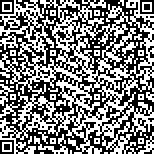许迎春,丁晶,田珍,等.头皮针联合高压氧治疗对急性脑梗死患者功能恢复及血清同型半胱氨酸、超敏C反应蛋白的影响[J].中华物理医学与康复杂志,2021,43(11):996-1000
扫码阅读全文

|
| 头皮针联合高压氧治疗对急性脑梗死患者功能恢复及血清同型半胱氨酸、超敏C反应蛋白的影响 |
|
| |
| DOI:10.3760/cma.j.issn.0254-1424.2021.11.008 |
| 中文关键词: 急性脑梗死 头皮针 高压氧 功能恢复 同型半胱氨酸 超敏C反应蛋白 |
| 英文关键词: Cerebral infarction Scalp acupuncture Hyperbaric oxygen Homocysteine C-reactive protein |
| 基金项目:国家中医药管理局全国中医药创新骨干人才培训项目(2019128);天津市卫生和计划生育委员会天津市中医药重点领域科研项目(2018002);天津市卫生健康委员会天津市中医药管理局中医中西医结合科研课题(2019124) |
|
| 摘要点击次数: 5407 |
| 全文下载次数: 5053 |
| 中文摘要: |
| 目的 观察头皮针联合高压氧治疗对急性脑梗死患者功能恢复及血清同型半胱氨酸、超敏C反应蛋白的影响。 方法 选取急性脑梗死患者101例,按照随机数字表法将其分为头皮针组(33例)、高压氧组(34例)和联合治疗组(34例)。3组均给予常规治疗,头皮针组在此基础上加用头皮针治疗,高压氧组加用高压氧治疗,联合治疗组加用头皮针及高压氧治疗,每日均治疗1次,共10 d。治疗前、治疗10 d及90 d后,采用美国国立卫生研究院卒中量表(NIHSS)、Barthel指数(BI)评分对3组患者的神经功能缺损和日常生活能力进行评估。治疗90 d随访时采用改良Rankin量表(MRS)评价预后。比较3组患者治疗前、治疗10 d后血清同型半胱氨酸(Hcy)、超敏C反应蛋白(hs-CRP)含量的变化。 结果 与组内治疗前比较,3组患者治疗10 d及90 d的NIHSS、BI评分均有所改善(P<0.05)。与头皮针组同时间点比较,联合治疗组治疗90 d后的NIHSS评分[(2.09±2.59)分]较低、BI评分[(79.71±19.03)分]较高(P<0.05)。治疗90 d随访时,联合治疗组MRS评分[(2.06±1.20)分]较低。与组内治疗前比较,治疗10 d时,头皮针组血清Hcy含量较低(P<0.05),高压氧组血清hs-CRP含量较低(P<0.05),联合治疗组血清Hcy、hs-CRP含量均较低(P<0.05)。与头皮针组比较,联合治疗组治疗10 d时血清Hcy含量[(11.68±2.6)μmol/L]较低(P<0.05)。 结论 头皮针联合高压氧治疗在改善急性脑梗死患者远期预后、降低血清Hcy水平方面具有确切疗效。 |
| 英文摘要: |
| Objective To observe the effect of combining scalp acupuncture with hyperbaric oxygen on serum homocysteine and highly-sensitive c-reactive protein levels and functional recovery after cerebral infarction. Methods A total of 101 survivors of cerebral infarction were divided randomly into a scalp acupuncture group (n=33), a hyperbaric oxygen group (n=34) and a combined treatment group (n=34). All received routine treatment plus the appropriate supplementary treatment once a day for 10 days. The subjects were evaluated before the experiment as well as 10 and 90 days afterward. The National Institutes of Health′s stroke scale (NIHSS) was used to quantify neurological deficits and the Barthel Index quantified ability in the activities of daily living. Ninety days after the treatment, modified Rankin scale scores were also assigned. The levels of serum homocysteine (Hcy) and highly-sensitive c-reactive protein (hs-CRP) before and after 10 days of treatment were also compared among the 3 groups. Results The average NIHSS and Barthel Index scores of all three groups had improved significantly after 10 days of treatment and the improvements persisted at the follow-up 3 months later. Both results were significantly better in the combined treatment group than in the scalp acupuncture group at the 90-day follow-up evaluation. The average Rankin score of the combined treatment group was lower at the last follow-up. Compared with before the intervention, the average Hcy of the scalp acupuncture group, the average hs-CRP of the hyperbaric oxygen group, as well as the average Hcy and hs-CRP of the combined treatment group were significantly lower after 10 days of treatment. Compared with the scalp acupuncture group, the average Hcy [(11.68±2.6) μmol/L] of the combined treatment group was significantly lower after the 10 days of treatment. Conclusions Supplementing scalp acupuncture with hyperbaric oxygen therapy improves the long-term outcomes of cerebral infarction, reducing the level of serum Hcy. |
|
查看全文
查看/发表评论 下载PDF阅读器 |
| 关闭 |